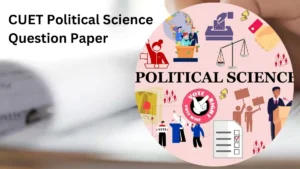Table of Contents

Ncert Solutions For Class 11 Chemistry Chapter 5 Download PDF
Adda247 provides NCERT solutions for the class 11 chemistry Chapter 5. The NCERT Solutions provided here will enhance the concepts of the students, as well as suggest alternative methods to solve particular problems to the teachers.
These NCERT Solutions Class 11 chemistry are presented in a very simple language so that you can understand the basic of chemistry with ease. These NCERT Solutions class 11 Chemistry cover chapters 1 to 14 with all important questions and answers explained in a detailed way.
Students can download the Class 111 Chemistry NCERT Solutions, which they want to study with the comfort of their house.
The solutions available are in depth and simplest way. Thus will help the students beyond examination marks. This will help them develop a core understanding of the subject. Because this subject demands understanding rather than just memorizing solutions of Class 11 Chemistry. Here below we are providing you with an overview of all the chemistry Class 11 Chapters that are there in the NCERT textbook.
At Adda247, students can access chapter-wise solutions to get their doubts clarified instantly. The faculty had provided both online and offline mode of Solutions which can be used free of cost.
Benefits of Solutions of NCERT class 11 Chemistry:
- NCERT Solutions for Class 11 is helpful to solve questions from other reference books too.
- NCERT Solutions for Class 11 Chemistry will assist students to cross-check answers and prepare for the exams in a strategic way.
The students can access the solutions anywhere while browsing web easily. The solutions are very precise and accurate.
NCERT Solutions for Class 11 Chemistry Chapter – 5: States of Matter
Chemistry is the basic of things which we see around in our environment and is known as the “central science”. As chemistry is a mandatory subject for the students, it requires more focus from the exam perspective. The solutions provided here are equipped with all the basic details with questions which might appear in exam. Furthermore, these NCERT Solutions can also be downloaded in a PDF format.
The questions in NCERT Solution Chemistry Class 11 covered in this exercise assist students in gaining insight into the chapter, so that they can have in-depth knowledge about the topic and excel in their upcoming exams.
All matter is made from atoms. Every substance (oxygen, lead, silver, neon …) has a unique number of protons, neutrons, and electrons. … Regardless of the type of molecule, matter normally exists as either a solid, a liquid, or a gas.
[sso_enhancement_lead_form_manual title=”Download Full PDF of Class 11 Chemistry Chapter 5 ” button =”Download Now” pdf =”/jobs/wp-content/uploads/2021/06/30172120/chapter-5-11th.pdf”]
Matter can change form through physical and chemical changes, but through any of these changes, matter is conserved. The same amount of matter exists before and after the change—none is created or destroyed. This concept is called the Law of Conservation of Mass
Matter is important for us because it has mass and it occupies space therefore all things that we can touch and see is part of matter.
We can see that matter around us exists in three different states– solid, liquid and gas. These states of matter arise due to the variation in the characteristics of the particles of matter.
There are three common states of matter:
Solids – relatively rigid, definite volume and shape. In a solid, the atoms and molecules are attached to each other. …
Liquids – definite volume but able to change shape by flowing. In a liquid, the atoms and molecules are loosely bonded. …
Gases – no definite volume or shape.
Solids, liquids and gases are different mainly because of their lattice arrangements and the cohesive forces between the molecules. … The cohesive forces between their molecules are also very weak. This gives gases their property to flow and compressibility.
It is important to understand the particle nature of matter. … The particles that make up matter are not ‘small bits of solid’ or ‘small drops of liquid’ but atoms and molecules. The physical characteristics of those atoms and molecules decide its state.
Intermolecular forces: Intermolecular forces are the forces of attraction or repulsion which act between neighboring particles (atoms, molecules, or ions). These forces are weak compared to the intramolecular forces, such as the covalent or ionic bonds between atoms in a molecule.
There are four major classes of interactions between molecules and they are all different manifestations of “opposite charges attract”. The four key intermolecular forces are as follows: Ionic bonds > Hydrogen bonding > Van der Waals dipole-dipole interactions > Van der Waals dispersion forces.
Important Question of NCERT Solutions Chemistry Class 11 Chapter 5
Question :1 What will be the minimum pressure required to compress 500 dm3 of air at 1 bar to 200 dm3 at 30 degree C?
Answer:
Initial pressure, p1 = 1bar
Initial volume, V1 = 500 dm3
Final volume, V2 = 200 dm3
As the temperature remains the same, the final pressure can be calculated with the help of Boyle’s law.
Acc., Boyle’s law,
P1 V1 = P2 V2
P2 = P1 V1 / V2
= 1 x 500 / 200
= 2.5 bar
: The minimum pressure required to compress is 2.5 bar.
Question :2 A vessel of 120 mL capacity contains a certain amount vessel of volume 180 mL at 35 degree C. What would be it’s pressure?
Answer:
Initial pressure, P1 = 1.2 bar
Initial volume, V1 = 120 mL
Final volume, V2 = 180 mL
As the temperature remains the same, final pressure can be calculated with the help of Boyle’s law.
According to the Boyle’s law,
P1 V1 = P2 V2
P2 = P1 V1 / V2
= 1.2 x 120 / 180
= 0.8 bar
Therefore, the min pressure required is 0.8 bar.
Question :3 Using the equation of state pV = nRT; show that at a given temperature density of a gas is proportional to gas pressure p.
Answer:
The equation of state is given by,
pV = nRT ……..(1)
Where, p = pressure
V = volume
N = number of moles
R = gas constant
T = temp.
n/V = p / nRT
Replace with m / M, therefore,
m / MV = p / RT ….(2)
Where, m = mass
M = molar mass
But, m / V = d
Where, d = density
Therefore, from equation (2), we get
d / M = p / RT
d = (M / RT)p
Therefore, at a given temperature, the density of the gas is proportional to its pressure.
Question :4 At 0 degree C, density of a certain oxide of a gas at 2 bar is same as that of dinitrogen at 5 bar. What is the molecular mass of the oxide?
Answer:
We know, density (d) = PM/RT
When T and d are constant {e.g. same}
Then, PM = constant
P1 M1 = P2 M2
Here, P1 = pressure of certain oxide of = 2 bar
P2 = pressure of N2 gas = 5 bar
M1 = molar mass of that oxide
M2 = molar mass of N2 gas = 28 g/mol
Now, 2 × M1 = 5 × 28
M1 = 70 g/mol
Hence, molar mass of unknown oxide = 70g/mol
Question :5 Pressure 1 g of an ideal gas A at 27 degree C is found to be 2 bar . When 2 g of another ideal gas B is introduced in the same flask at same temperature the pressure becomes 3 bar. Find a relationship between their molecular masses.
Answer:
Mass of gas A, WA = 1g
Mass of gas B, WB = 2g
Pressure exerted by the gas A = 2 bar
Total pressure due to both the gases = 3 bar
In this case temperature & volume remain constant
Now if MA & MB are molar masses of the gases A & B respectively, therefore
pA V= WA RT/MA & Ptotal V = (WA/MA + WB/ MB) RT
= 2 X V = 1 X RT/MA & 3 X V = (1/MA + 2/MB) RT
From these two equations, we get
3/2 = (1/MA + 2/MB) / (1 /MA) = (MB + 2MA) / MB
This result in 2MA/ MB = (3/2) -1 = ½
OR
MB = 4MA
Thus, a relationship between the molecular masses of A and B is given by
4MA = MB

Question :6 The drain cleaner, Drainex contains small bits of aluminium which react with caustic soda to produce dihydrogen. What volume of dihydrogen at 20 degree C and one bar will be released when 0.15 g of aluminium reacts?
Answer:
The reaction of aluminium with caustic soda is as given below:
2Al + 2NaOH + 2H2O à 2NaAlO2 + 3H2
At standard temperature pressure, 54g of Al gives 3 x 22400 mL of H2
Therefore, 0.15 g Al gives:
= 3 x 22400 x 0.15 / 54 mL of H2
= 186.67 mL H2
At standard temperature pressure,
p1 = 1 atm
V1 = 186.67 mL
T1 = 273.15 K
Let the volume of dihydrogen be V2 at p2 = 0.987 atm and T2 = 200C = (273.15 + 20) K = 293.15 K.
Now,
P1V1 / T1 = p2V2/T2
V2 = p1 V1 T2 / p2 T1
= 1 x 186.67 x 293.15 / 0.987 x 273.15
= 202.98 mL
= 203 mL
Hence, 203 mL of dihydrogen will be released.
Question :7 What will be the pressure exerted by a mixture of 3.2 g of methane and 4.4 g of carbohydrates dioxide contained in a 9 dm3 flask at 27 degree C?
Answer:
It is known that,
p = m/M . RT/V
For methane (CH4),
PCH4,
= 3.2/16 x 8.314 x 300 / 9 x 10-3m [Since 9 dm3 = 9 x 10-3 m3 270C = 300K]
= 5.543 x 104 Pa
For carbon dioxide (CO2)
PCO2
= 4.4/44 x 8.314 x 300 / 9 x 10-3
= 2.771 x 104 Pa
Total pressure exerted by the mixture can be calculated as:
p = pCH4 + pCO2
= (5.543 x 104 + 2.771 x 104) Pa
= 8.314 x 104 Pa.
Question :8 What will be the pressure of the gaseous mixture when 0.5 L of H2 at 0.8 bar and 2.0 L of dioxygen at 0.7 bar are introduced in a 1L vessel at 27 degree C?
Answer:
From the equation Pv = n RT for the two gases. We can write
0.8 x 0.5 = nH2 x RT or nH2 = 0.8 x 0.5 / RT
Also, 0.7 x 2.0 = n02 . RT or n02 = 0.7 x 2 / RT
When introduced in 1 L vessel, then
P x 1L = (n02 + nH2) RT
Putting the values, we get
P = 0.4 + 1.4 = 1.8 bar
Hence, the total pressure of the gaseous mixture in the vessel is 1.8 bar
Question :9 Density of a gas is found to be 5.46 g/dm3 at 27 degree C at 2 bar pressure. What will be it’s density at STP?
Answer:
Given:
d1 = 5.46 g/dm3
p1 = 2 bar
T1 = 270C = (27 + 273k) = 300K
p2 = 1bar
T2 = 273 K
d2 = ?
the density of the gas at STP can be calculated using the equation,
d = Mp/RT d1/d2 = p1 T2 / p2 T1
d2 = p2 T1 d1 / p1 T2
= 1 x 300 x 5.46 / 2 x 273
= 3 g dm-3
Hence, the density of the gas at STP will be 3 g dm-3.
Question :10 34.05 mL of phosphorus vapour weighs 0.0625 g at 546 degree C and 0.1 bar pressure. What is the molar mass of phosphorous?
Answer
Given,
p = 0.1 bar
V = 34.05 mL = 34.05 × 10–3 L = 34.05 × 10–3 dm3
R = 0.083 bar dm3 K–1 mol-1
T = 546°C = (546 + 273) K = 819 K
From the gas equation PV = w. RT / M, we get
M = w. RT/ Pv ……….(1)
Substituting the given values in the equation (1), we get
M = (0.0625 / 0.1 x 34.04) X 82.1 X 819 = 124.75 g/mol
Hence, the molar mass of phosphorus is 124.75 g mol-1
Frequently asked questions on NCERT Solutions Class 11 Chemistry Ch 5
- What are the physical Properties of Gases?
Ans. The physical properties of gases are:
- The molecules in the gases are highly compressible.
- Gases exert pressure in all direction.
- The density in the gases is much lower than the solids and liquids.
- Gases do not have definite volume and shape. They take the shape of a container.
- Gases mix completely in all proportions.
- How is surface tension caused?
Ans. The surface tension arises due to cohesive interactions between the molecules in the liquid. At the bulk of the liquid, the molecules have neighboring molecules on each side. Molecules are pulling each other equally in all directions causing a net force of zero.
- What are the factors that determine the State of Matter?
Ans. The two factors on which states of matter depends are:
(A) Inter-particles forces of attraction.
It keeps the particles together also called intermolecular forces.
(B) Thermal Entergy: It is the energy passed by matter duet to heat energy.
It increases the kinetic energy and hence tries to keep the particles apart.
- Is NCERT Solutions for Class 11 Chemistry Chapter 5 States of Matter suitable for CBSE students?
Ans. NCERT Solutions have been prescribed for years as a complete source of information to CBSE students, to develop their analytical skills. They have proven to be essential for learning the syllabus and developing the confidence that is required to face their exams. The NCERT Solutions for Class 11 Chemistry Chapter 5 States of Matter explain the steps with precision, without missing out on essential aspects of solving a question.
- What is the meaning of thermal energy according to NCERT Solutions for Class 11 Chemistry Chapter 5?
Ans. Thermal Energy
Thermal energy refers to the energy of a body that arises from the motion of its atoms or molecules.
The thermal energy of a substance is directly proportional to the temperature of the substance
It is also defined as the measure of average kinetic energy of the constituent particles of a substance and hence responsible for movement of those particles.

 CUET Political Science Question Paper 20...
CUET Political Science Question Paper 20...
 CUET Business Studies Syllabus 2025, Do...
CUET Business Studies Syllabus 2025, Do...
 CUET Commerce Syllabus 2025: Major Chang...
CUET Commerce Syllabus 2025: Major Chang...







